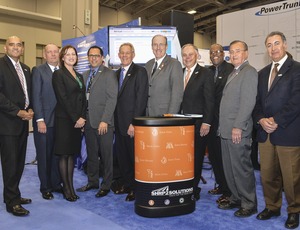

A new era of transportation is right around the corner—one where driverless, autonomous vehicles cruise public roadways utilizing ever-advancing mobile and location-based electronics to read the roadways and re-route traffic to avoid accidents, congestion, construction, roadway debris, even potholes.
How will these and other technological changes affect America's roadways and highway systems? What should transportation agencies do to prepare for the vehicles of the future? And how can transportation agencies utilize the huge amounts of data being generated by smartphones and Internet-connected devices to improve safety and efficiency? These are just a few of the questions that the new National Operations Center of Excellence (NOCoE ) hopes to answer.
"We are at that juncture of transportation innovation where it's very exciting but also very puzzling and scary," says Dennis Motiani, NOCoE executive director, who leads the center with oversight from a board of directors composed of representatives from state, regional and local transportation agencies, private industry and the federal government.
Launched in January, the Washington, D.C.-based center aims to facilitate collaboration within the transportation systems management and operations (TSM&O) community through peer exchange workshops, webinars and summits; ongoing assessments of best practices in the field; and on-call assistance. The centerpiece of NOCoE's efforts is its website, which will serve as a centralized hub for state and federal agencies to share case studies, resources, discussion forums and events.
So far, only a handful of states have legalized driverless vehicles and allow their makers to test them on public roads, but autonomous vehicle legislation is pending in states across the country. And with Boston-based Lux Research forecasting self-driving cars to become an $87-billion market by 2030, the pressure is on transportation agencies to ready the highways of today for the cars of tomorrow.
The problem is that no one is sure what the DOTs will be asked to do, Motiani says. "This troubles many DOT policymakers, as DOTs typically take anywhere from 10 to 30 years, depending on short-range and long-range plans, to plan, design and construct a complex highway system," he says. "How then can the DOTs plan and design highways if they are unsure of the needs of the futuristic highway."
Several manufacturers are already moving toward hands-free driving. General Motors is expected to introduce Super Cruise in the 2017 Cadillac that takes control of highway steering, acceleration and braking at speeds of up to 70 mph.
Meanwhile, Google, Mercedes and Volkswagen are testing self-driving cars on California roadways. A fully self-driving car is expected to be a reality in the next decade or two, according to Don Hunt, the NOCoE chair and the former executive director of the Colorado Dept. of Transportation.
"One of the challenges of running a transportation agency is knowing where to make longer-term investments and where to ramp down programs," Hunt says. "With autonomous vehicles, there is a lot of uncertainty in terms of what needs to be done, what would be too little, what would be too much. The center is the place where agencies can ask questions and share ideas and find solutions."
Through collaboration across state agencies, the center hopes to develop best practices for addressing infrastructure issues raised by autonomous vehicles. Such challenges include how to optimize lighting and street signage on city streets for the vehicles' radar vision and the bigger issue of whether to network roadways with wireless technology and sensors to improve communication and connectivity between roadways and vehicles.

Post a comment to this article
Report Abusive Comment